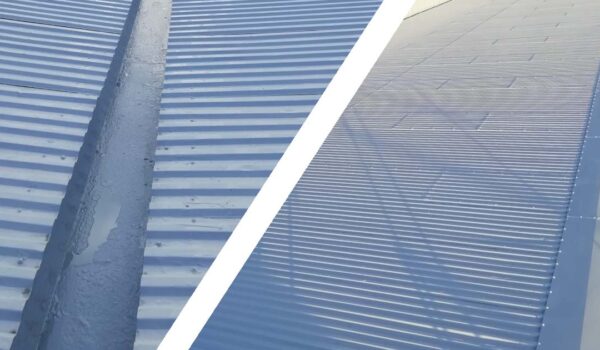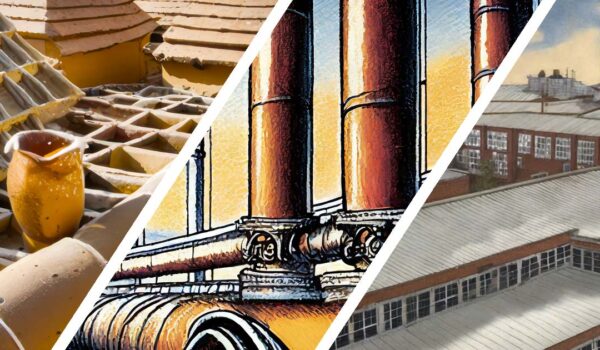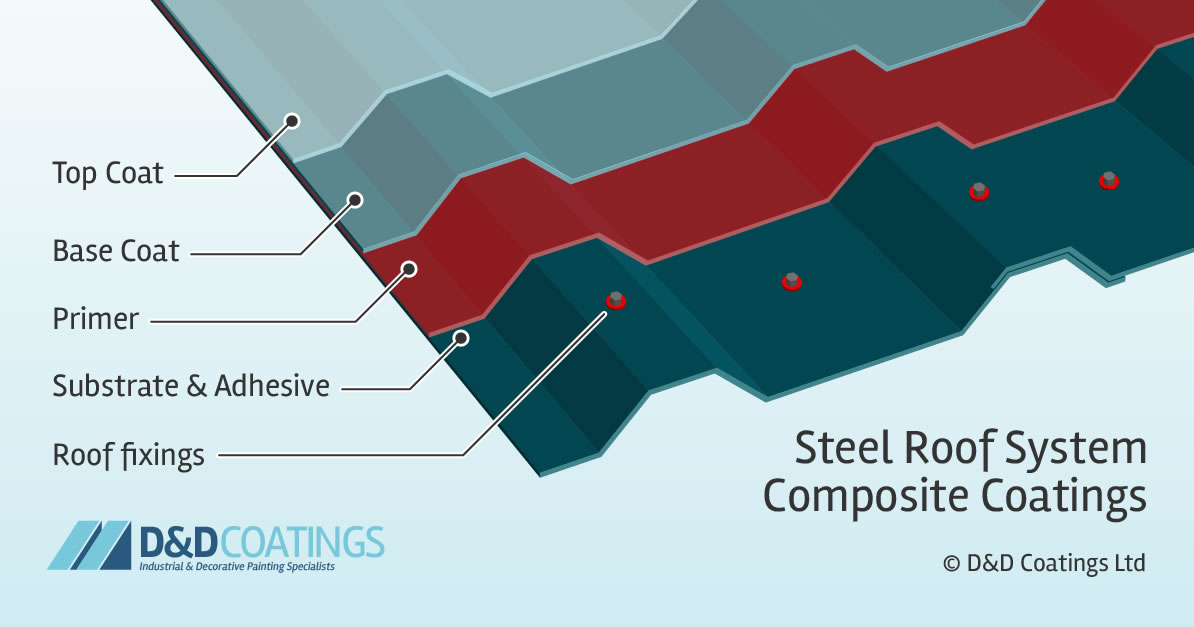
Composite coatings are a series of protective layers applied to a substrate such as steel, concrete or any material. Substrate corrosion protection using composite coatings is achieved with a combination of at least two substances. These substances usually form two or more layers of an epoxy resin and a polyurethane synthetic resin.
Composite coating systems are manufactured at hi-tech facilities across the world. They are designed to meet the high standards and rigid requirements of many different industries. They provide excellent corrosion protection and waterproofing. Composite coatings also protect against fire, heat, stress and UV light.
Many composite coatings are also used to fulfil decorative purposes. A variety of top coat colours and textures are available for numerous applications. This includes the construction industry, manufacturing, aerospace and so on.
The layers in Composite Coatings explained
Composite coatings consist of a series of layers such as :
- Adhesive treated substrate.
- Primer.
- Base coat.
- Top coat.
The first layer is the substrate which is the material to be coated. In the diagram above the substrate is the steel roof sheet. However the substrate could be anything from a concrete slab to the panel on an aircraft wing.
In a composite coating system the substrate is treated with a basis metal interface or adhesive. This acts as a bond between the substrate and other layers. Typically a primer is the first comprehensive layer applied following the substrate adhesive. This primer acts as the first barrier against corrosion.
A base coat or pretreatment layer will be applied to the primer layer. This acts as another line of defence and water repellent. Finally the top coat is applied and is the first line of defence against corrosion. The top coat also has a decorative function and comes in a range of colours. Top coats can be colour matched to existing colour schemes or corporate branding.
Where are Composite Coatings used?
One of the most common uses for composite coatings is in the construction industry. They are typically used to protect steel from corrosion. However they are also used as intumescent and thermal barriers on concrete and other materials. In these instances they would be low VOC and very lightweight.
Other areas of use are are manufacturing, the automotive industry, aerospace and the oil and gas industries. Composite coatings used in these industries are produced in different ways. They all basically perform the same task which is to protect and strengthen the host substrate.
How are Composite Coatings applied?
Application by spraying, dipping, rolling and brushing are the most common methods used. More specialised methods include electrochemical and electroless plating. Different environments dictate which methods are most appropriate.
- Brushing
Application by brush is the most efficient method with less wastage and is frequently employed in building maintenance. It is also the most labour intensive and time consuming way of applying layers of protective coatings. Brush application has other advantages over spraying and dipping. It is easier in small areas and contamination of surroundings is less likely. Brushing also provides higher shearing between the adhesive base coat and the steel substrate. It is often recommended that the base coat or primer should be applied by brush.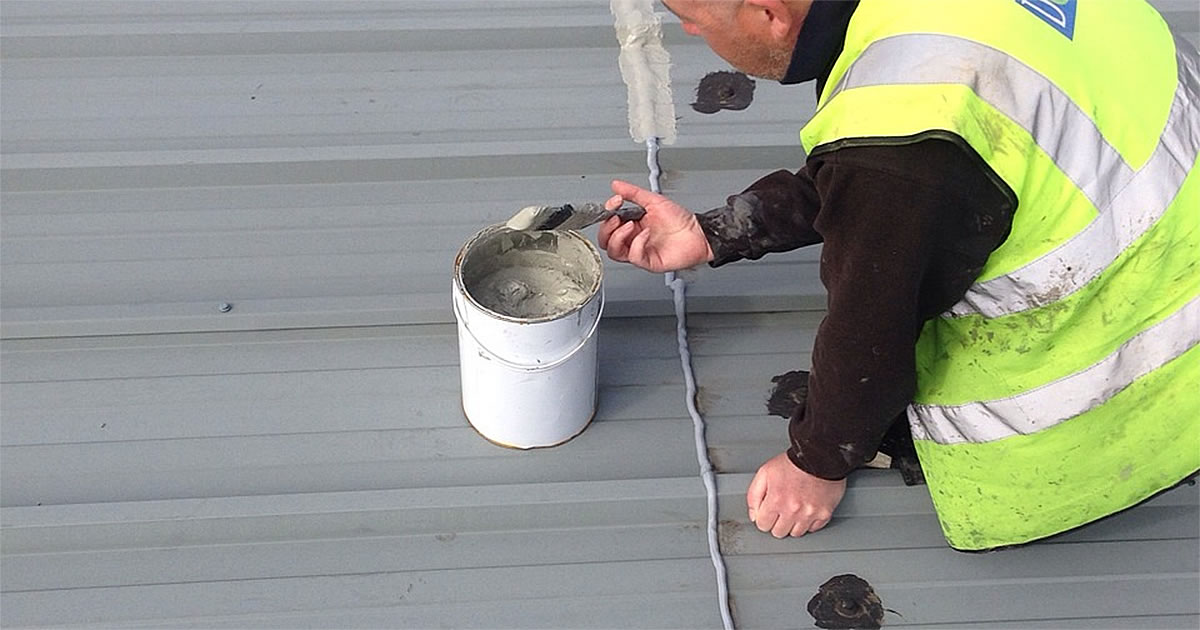
Composite coating application by brushing. - Rollering
Roller application is faster than brushing but not as common. Is is not suitable for steel cladding where the surface is rarely flat. Numerous corners, fixings and roof sheet profiles sometimes makes composite coating application by roller a tricky process.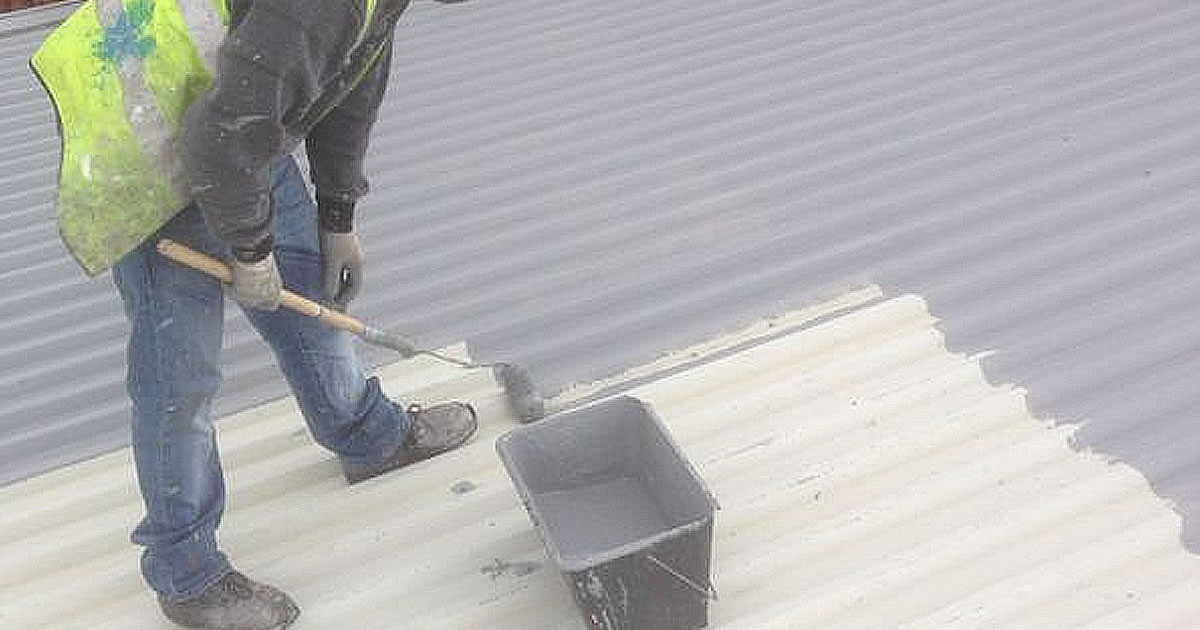
Applying by roller is challenging on certain roof types. - Spraying
Spraying is the fastest method used, however this can be problematic in windy or exposed environments. Especially where contamination of the surrounding areas is not desirable. There are different spray systems used for the application of coatings. These include air spraying, airless spraying and heat assisted airless spraying. The choice of systems depends on the coating being applied and the setting in which it is applied.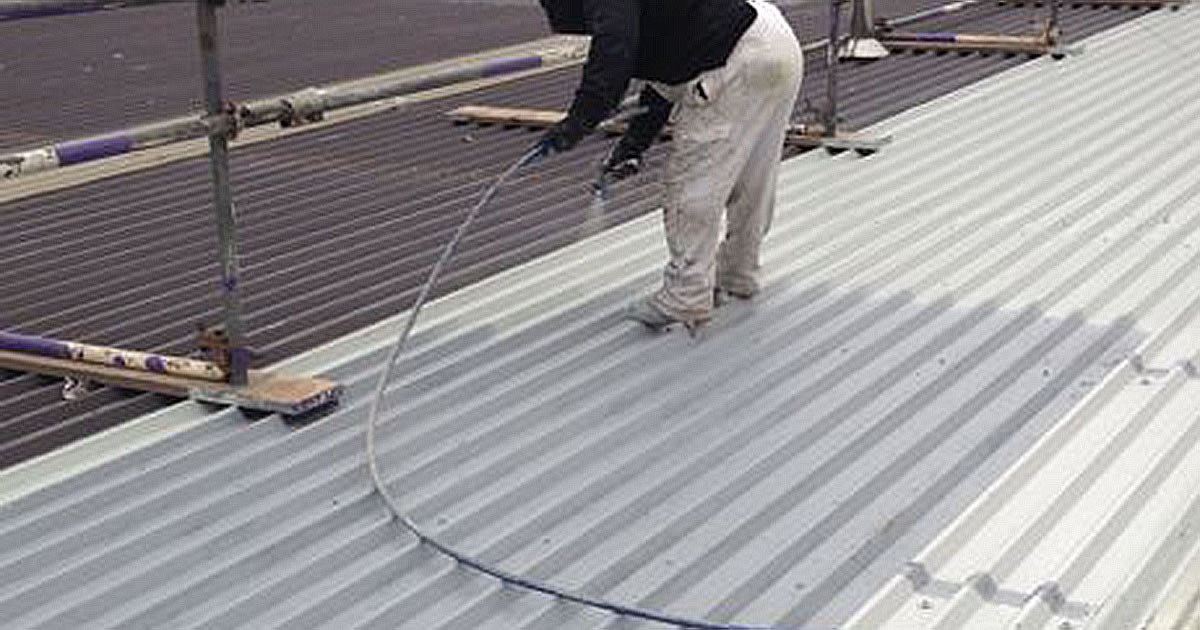
Spraying is the fastest method for applying composite coatings.
Problems with Composite Coatings
Over long periods of time exposure to weather radically compromises the structural integrity of the cladding and other materials. This often starts with delamination of the laminated material. The adhesive no longer adheres to the base-coat or substrate material. Separation of the layers in the composite results in debonding.
Debonding ultimately exposes fixings, sheet ends and other components to weather. The main cause of premature delamination and debonding is the use of lower quality cheaper coatings. Debonding also occurs if mechanical forces that hold the bond together are broken. This is usually as a result of impact, repeated cyclic stresses, vibration or environmental attack such a UV light.
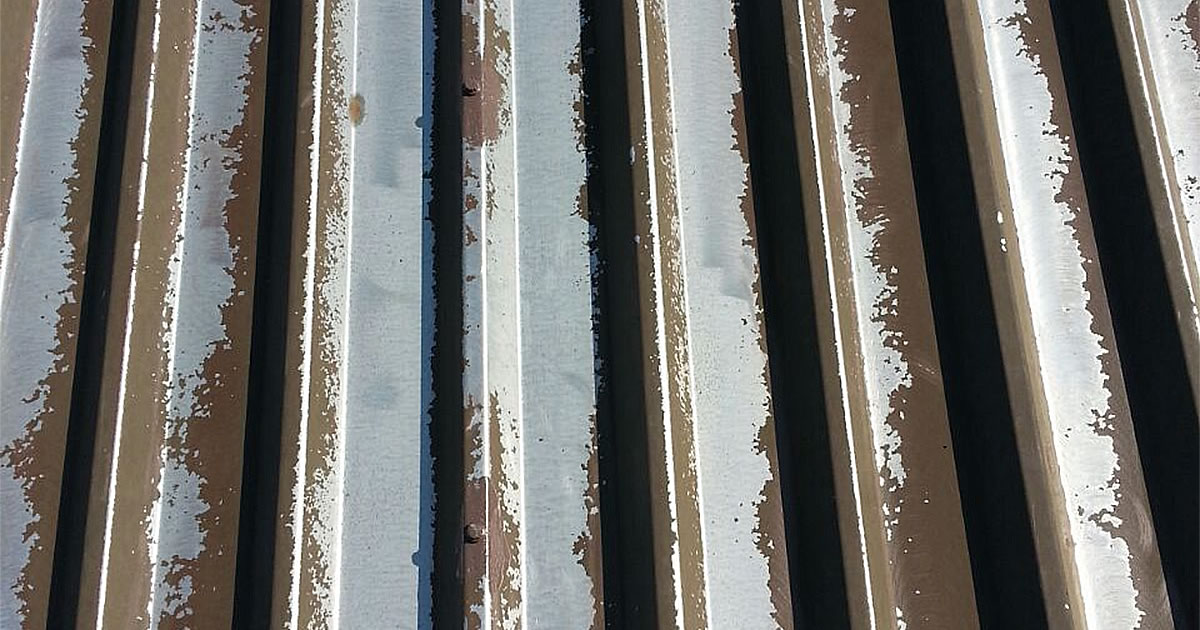
More Reading
For more in-depth and scientific information about composite coatings please read the following resources :
If you would like to find out about our coating services please call 01606 55404, email enquiries@ddcoatings.co.uk or visit our contact page.

